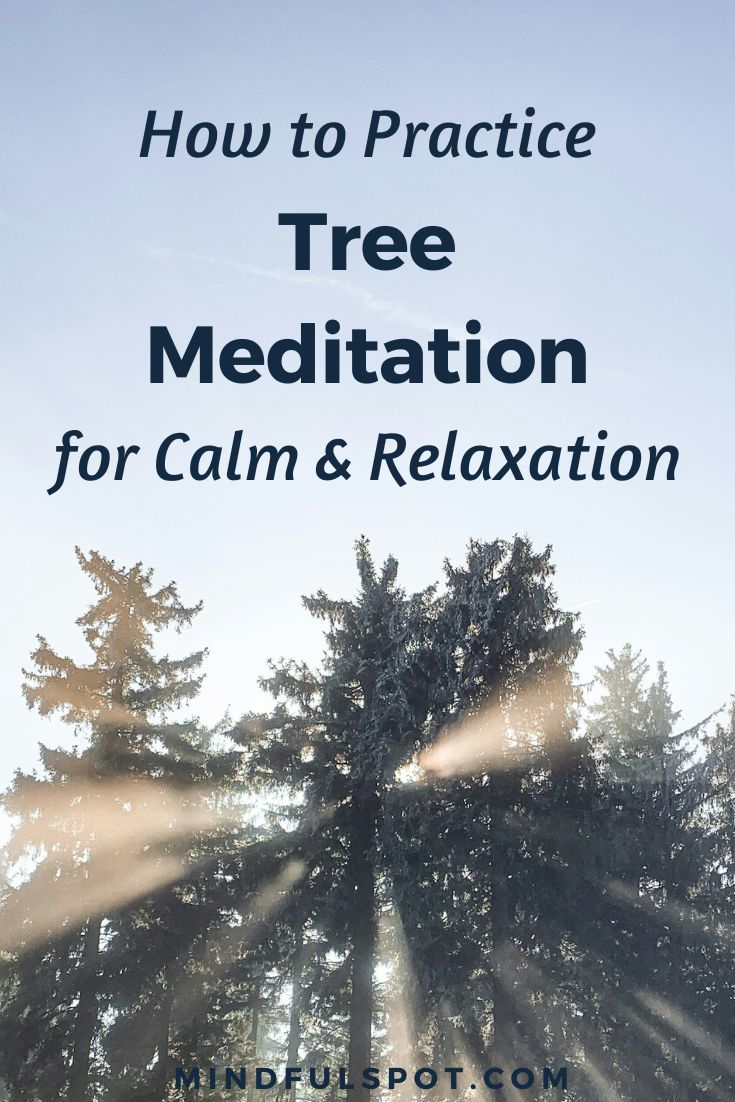If you’ve learned how to see a tree, you no longer want it to be merely a “tree;” you simply want it to “be.” That is seeing; that is being; that is life.
In this way, you develop a tender kinship with trees, recalibrating your sense of what’s real, of what’s most important in your perception of the world.
However, this is not what happens when you’re out in nature. Your first response, your first unconscious mental habit, is to assume that by naming a tree, you acknowledge its existence. You assume that by naming a tree, you confer upon it the dignity of autonomy, affirming its belonging with the rest of the namable world and transforming its strangeness into familiarity.

FREE Self-Test: How Spiritual Are You?
But nothing could be farther from the truth. Names are mere words, and words have a tendency to obscure the true nature of their objects. This is what spiritual teacher Eckhart Tolle — a man of immense wisdom and insight — explores in a portion of his book The Power of Now.
What follows is Eckhart Tolle’s guided tree meditation technique to relax, relieve stress, and learn how to perceive the true essence of a tree beyond labels, beyond the deadening world of mental abstractions.
It’s a meditation technique that, when mastered, can rekindle your ability to see trees and your fellow human beings for what they truly are. It starts with this question:
A moment ago, when you talked about the eternal present and the unreality of past and future, I found myself looking at that tree outside the window. I had looked at it a few times before, but this time it was different. The external perception had not changed much, except that the colors seemed brighter and more vibrant. But there was now an added dimension to it. This is hard to explain. I don’t know how, but I was aware of something invisible that I felt was the essence of that tree, its inner spirit, if you like. And somehow I was part of that. I realize now that I hadn’t truly seen the tree before, just a flat and dead image of it. When I look at the tree now, some of that awareness is still present, but I can feel it slipping away. You see, the experience is already receding into the past. Can something like this ever be more than a fleeting glimpse?
You were free of time for a moment. You moved into the Now and therefore perceived the tree without the screen of mind. The awareness of Being became part of your perception. With the timeless dimension comes a different kind of knowing, one that does not “kill” the spirit that lives within every creature and every thing. A knowing that does not destroy the sacredness and mystery of life but contains a deep love and reverence for all that is. A knowing of which the mind knows nothing.
The mind cannot know the tree. It can only know facts or information about the tree. My mind cannot know you, only labels, judgments, facts, and opinions about you. Being alone knows directly.
There is a place for mind and mind knowledge. It is in the practical realm of day-to-day living. However, when it takes over all aspects of your life, including your relationship with other human beings and with nature, it becomes a monstrous parasite that, unchecked, may well end up killing all life on the planet and finally itself by killing its host.
You have had a glimpse of how the timeless can transform your perceptions. But an experience is not enough, no matter how beautiful or profound. What is needed and what we are concerned with is a permanent shift in consciousness.
So break the old pattern of present-moment denial and present-moment resistance. Make it your practice to withdraw attention from past and future whenever they are not needed. Step out of the time dimension as much as possible in everyday life. If you find it hard to enter the Now directly, start by observing the habitual tendency of your mind to want to escape from the Now. You will observe that the future is usually imagined as either better or worse than the present. If the imagined future is better, it gives you hope or pleasurable anticipation. If it is worse, it creates anxiety. Both are illusory. Through self-observation, more presence comes into your life automatically. The moment you realize you are not present, you are present. Whenever you are able to observe your mind, you are no longer trapped in it. Another factor has come in, something that is not of the mind: the witnessing presence.
Be present as the watcher of your mind — of your thoughts and emotions as well as your reactions in various situations. Be at least as interested in your reactions as in the situation or person that causes you to react. Notice also how often your attention is in the past or future. Don’t judge or analyze what you observe. Watch the thought, feel the emotion, observe the reaction. Don’t make a personal problem out of them. You will then feel something more powerful than any of those things that you observe: the still, observing presence itself behind the content of your mind, the silent watcher.
Complement this guided tree meditation technique from The Power of Now with Matsuo Basho’s poetic call to learn from the pine and then revisit Thoreau, always Thoreau, on finding healing solitude in nature.

FREE mindfulness resources for stress relief
I’m a freelance writer and mindfulness advocate behind this blog. I started my meditation practice in 2014, and in 2017 I launched this website to share what I learn with others. Here are the three things you can do here:
1. Schedule a free consult if you want to learn Buddhist meditation.
2. Download free mindfulness resources for stress relief
3. Join Patreon for exclusive content and community meetings.









